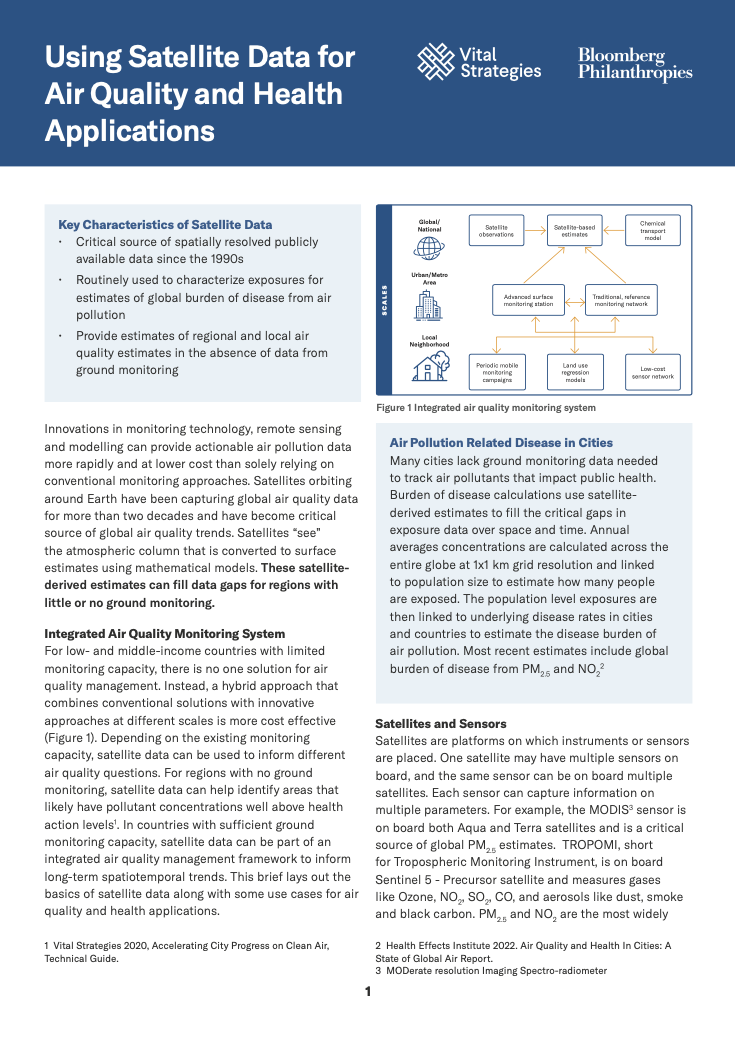More than 90% of the world breathes polluted air. Yet, many cities lack ground monitoring data needed to track air pollutants that impact public health.
For countries with limited monitoring capacity, there is no one solution for air quality management. Instead, a hybrid approach that combines conventional solutions with innovative approaches at different scales is more cost effective. One approach includes the use of satellites and sensors. Satellites orbiting around Earth have been capturing global air quality data for more than two decades and have become critical source of global air quality trends. Satellites “see” the atmospheric column that is converted to surface estimates using mathematical models. These satellite derived estimates can fill data gaps and provide estimates of regional and local air quality in the absence of data from ground monitoring
This brief provides an overview on using satellite data for air quality and health applications, resources and trainings for cities to start integrating satellite data into their air quality management plans and national and access to regional datasets.
Recent Abstracts
More Data Better Health: Climate and Health in the Legal Amazon
Mais Dados Mais Saúde: Clima e Saúde na Amazônia Legal
Health Taxes Action Guide
Opinión pública frente a la política de alcohol: Colombia
Public Attitudes Towards Alcohol Policy: Colombia
2024 Activity Report – Brazil
Estimação do impacto de diferentes cenários de redução do consumo de álcool no…
Estimation of the impact of various scenarios of reduction of alcohol use in…
Relatório de Atividades 2024 – Brasil
The Future of Health Financing in Africa: The Role of Health Taxes
